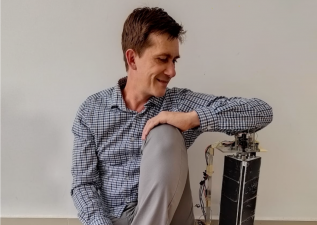Researchers at the Qatar Environment and Energy Research Institute worked alongside colleagues at Trinity College Dublin to solve solar energy mysteries related to the physical properties of photovoltaic perovskite materials. Their discovery may lead to more efficient solar energy harvesting.
Carlo Motta, Fedwa El-Mellouhi, Sabre Kais, Nouar Tabet, Fahhad Alharbi and Stefano Sanvito (acting director of the Irish funded AMBER material’s science centre) published their research in the prestigious journal Nature Communications.
Their paper, entitled: Revealing the role of organic cations in hybrid halide perovskite CH3NH3PbI3 explains how the organic molecules and inorganic salts in perovskites work together to achieve 20% or better photovoltaic harvesting efficiency.
Persovkites were known to be particularly efficient in converting solar energy into electricity but no one knew why, until now. To understand this research, it helps to know that from the 1950s when Bell Labs began producing photovoltaics for the US space program until now, most commercial photovoltaics rely on the semiconductor properties of doped silicon. “Dope” (impurities) in the silicon crystal lattice is added to favour the capture of photons, creation of electrons/holes pairs and help maintain charge separation.
These are at least three important characteristics of efficient photovoltaic (PV) materials: The first is that it must capture photons. The reason most PV materials appear black or dark-blue is that they are efficient at capturing (not reflecting) photons of many wavelengths.
The second characteristic is that it is able to convert the energy of photons into electron/hole pairs. When a photon’s energy knocks an electron out of its comfortable position within the crystal, it leaves a hole and the photon’s energy is converted into a tiny separation of charge (voltage.)
The third important characteristic of an efficient PV material is the ability to preserve charge separation so the majority of electrons don’t fall back into holes before exiting via conductive electrodes. Ideally the atoms and molecules of a PV material would be shaped as one-way valves, allowing light to bump electrons out of their holes while keeping them from falling back.
Using computational models, the Qatari and Irish scientists were able to simulate the behaviour of persovkites and determine that at the molecular level, the inorganic molecule shapes change the band gap voltage in such a way that favours photon capture and the creation of electron/hole pairs while slowing the process of electrons falling back into holes. The understanding gained from this approach will allow people to develop even more efficient solar energy capture materials.
Image of sun catcher from Shutterstock





One thought on “Mystery energies of solar power solved!”
Comments are closed.